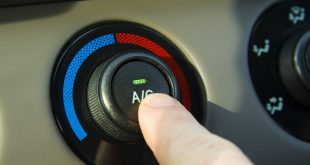
Headphone-related hearing loss
Remember when your parents used to yell, “Turn it down”? With headphones, that’s no longer necessary but, according to the journal Pediatrics, more than 12 per cent of children suffer from noise-inducedhearing loss due to hazardous levels of noise. And it’s simply a matter of volume. Experts advise that 85 decibels is the maximum safe level for continuous exposure, but most MP3 players have a maximum of about 105, at which safe exposure is exceeded after about four minutes per day. Rock legend Pete Townshend, the former guitarist for The Who, says his hearing was damaged from using studio earphones. “Hearing loss is a terrible thing,” he says, “because it can’t be repaired.”
Social media depression
In February this year, a study by the University of Missouri in the US confirmed what most of us already knew – that scrolling throughFacebook can make us feel jealous. But the findings took things one step further and concluded that some users actually experience symptoms of depression as a result. This comes on top of another report published in the journal Computers In Human Behaviour that found the longer you’re on Facebook, the worse you feel. The reason? More so than other areas of internet surfing, Facebook makes you feel as though you’re wasting your life.
Computer vision syndrome
Computer vision syndrome, which is also referred to as digital eye strain, describes a group of eye and vision-related problems, including blurred vision, dry eyes, headaches and neck and shoulder pain that result from prolonged computer, tablet and mobile phone use. It’s not actually looking at a screen that causes the problems; it’s how you do it.
The Australasian College of Behavioural Optometrists has a list of suggestions to combat the symptoms, including making sure yourposture is correct, taking screen breaks every 15-20 minutes, keeping the lighting at a level similar to the brightness of the screen, and alternating screen viewing with something that requires distance vision such as playing a sport.
3-D hangover
As many as 60 per cent of 3-D viewers report symptoms such as tired eyes or headaches, according to a study published in the journal BMC Public Health. Since the huge success of James Cameron’s 2009 film Avatar, everything from The SpongeBob Movie to The Hobbit features a 3-D release. The glasses work by filtering images so the left eye sees one image and the right eye sees a slightly different image. It’s then up to the brain to fuse them together and this is where problems can occur. Movies aside, however, it seems that not many people are likely victims. 3-D gaming has been a well-documented flop (Nintendo 3DS excepted) and the TV-buying public hasn’t exactly embraced it. Perhaps no one wants to wear those ridiculous glasses.
E-thrombosis
Sitting still in one position for a long period of time can restrict blood flow to the legs. Blood clots can form, which travel to the lungs (a pulmonary embolism) and may result in sudden death.
Gamers are the group that’s considered most at risk as they often spend hours in front of their screens. The term e-thrombosis was coined by doctors in New Zealand when, in 2003, they looked into the near-death experience of a 32-year-old man who’d been spending up to 18 hours a day seated at his computer.
In a statement, Microsoft, who manufactures the Xbox console, says, “We recommend gamers take periodic breaks to exercise.”
Sick building syndrome
Headaches, nausea, dizziness, dry cough, itchy skin, trouble concentrating, fatigue, flu-like symptoms and even personality changes – sick building syndrome (SBS) can lay claim to them all. No specific illness is ever diagnosed, but the common factor is that sufferers report relief once they’ve left the building.
A NSW report estimated the cost at hundreds of millions of dollars a year in lost productivity. You may imagine draughty old buildings are more likely to give you the sniffles, but in reality it’s inadequate ventilation that’s thought to be a major factor in SBS as it’s more common in modern, energy-efficient buildings where insulation levels have gone through the roof and windows are sealed shut.
Other factors linked with SBS include absence of sunlight, bad acoustics, poor ergonomics, electromagnetic radiation from gadgets such as computers, microwaves and TVs, and stress.
Source: bodyandSoul
 We are sharing information for knowledge. Presented by. SocialDiary.Net
We are sharing information for knowledge. Presented by. SocialDiary.Net



